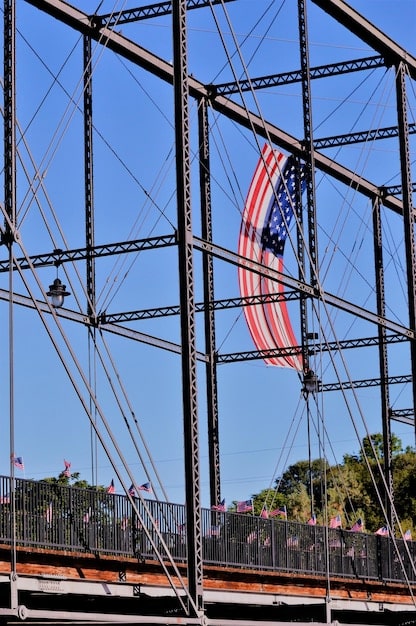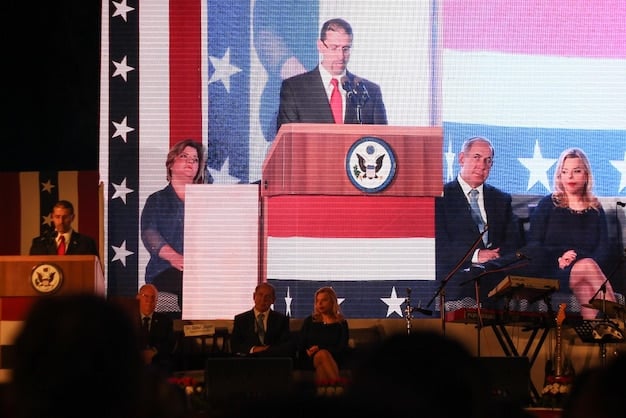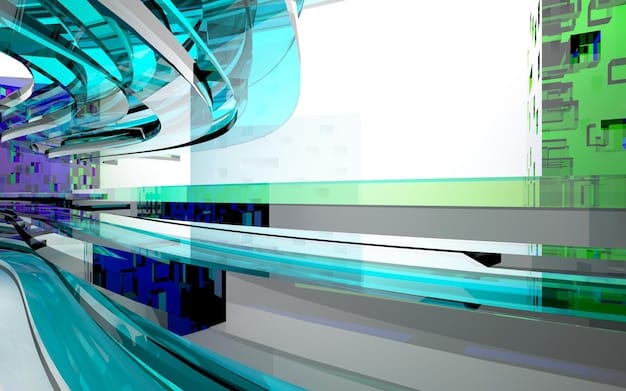Bipartisan Infrastructure Deal: Cooperation or Truce?

Examining the Bipartisan Infrastructure Deal, this article analyzes whether its passage signifies a genuine shift towards increased cooperation in Congress or merely represents a temporary respite from the deep political polarization that characterizes the American political landscape.
The passage of the Bipartisan Infrastructure Deal was hailed by many as a sign that compromise and cooperation are still possible in Washington. But does this deal represent a genuine shift in political dynamics, or is it simply a temporary truce in an era of intense partisan division?
Examining the Bipartisan Infrastructure Deal
The Bipartisan Infrastructure Deal, officially known as the Infrastructure Investment and Jobs Act, is a comprehensive piece of legislation aimed at modernizing America’s infrastructure. Signed into law, it allocates billions of dollars to repair roads and bridges, upgrade public transportation, expand broadband internet access, and improve water and energy systems. The deal garnered support from both Democrats and Republicans, leading to its passage in a deeply divided Congress.
However, the question remains whether this bipartisan achievement is an anomaly or a harbinger of future cooperation. To understand its significance, it’s crucial to examine the context in which it was negotiated, the motivations of the key players involved, and the potential implications for American politics.

The Road to Bipartisanship: A Difficult Journey
Achieving bipartisanship in today’s political climate is no easy feat. Several factors contributed to the successful passage of the Infrastructure Deal.
- Presidential Leadership: The Biden administration made infrastructure a top priority, actively engaging with both parties to find common ground.
- Growing Public Demand: The deteriorating state of America’s infrastructure has become a pressing issue, with widespread public support for investment and improvement.
- Political Pragmatism: Some Republicans recognized the need to address infrastructure issues in their states and districts, regardless of partisan considerations.
Potential Obstacles and Challenges Ahead
Despite the successful passage of the Infrastructure Deal, significant challenges remain. Disagreements over funding mechanisms, project priorities, and regulatory requirements could hinder implementation. Furthermore, the upcoming midterm elections may further exacerbate partisan tensions, making future cooperation more difficult.
The Bipartisan Infrastructure Deal represents a significant investment in America’s future. Its passage suggests that compromise and collaboration are still possible in Washington, but it also highlights the challenges of achieving bipartisanship in a polarized political landscape. Only time will tell whether this deal is a genuine turning point or simply a temporary respite from partisan gridlock.
The State of Political Polarization in the US
To fully appreciate the significance of the Bipartisan Infrastructure Deal, it’s essential to understand the current state of political polarization in the United States. Over the past few decades, the political divide between Democrats and Republicans has grown wider and deeper, making it increasingly difficult to find common ground on policy issues.
Several factors have contributed to this polarization, including:
The Role of Media and Technology
The rise of social media and 24-hour news cycles has amplified partisan voices and created echo chambers, where individuals are primarily exposed to information and opinions that reinforce their existing beliefs.
Demographic Shifts and Cultural Divides
Changing demographics and cultural values have further deepened the political divide, with Democrats and Republicans increasingly living in different communities and holding different worldviews.
- Economic Inequality: Widening income inequality has fueled resentment and distrust, leading some voters to embrace populist and anti-establishment candidates.
- Decline of Civic Engagement: Declining rates of participation in civic organizations and activities have weakened social bonds and reduced opportunities for cross-partisan dialogue.
Party Strategies and Political Maneuvering
Both Democrats and Republicans have adopted increasingly partisan strategies, seeking to mobilize their base and demonize the opposition. This has created a climate of intense political competition, where compromise is often seen as a sign of weakness.
The Bipartisan Infrastructure Deal stands in stark contrast to this trend of political polarization. Its passage suggests that there may be some issues where compromise is still possible, even in today’s hyper-partisan environment.
Key Provisions of the Infrastructure Investment and Jobs Act
The Infrastructure Investment and Jobs Act addresses vital improvements across diverse sectors to modernizing America
The Bipartisan Infrastructure Deal allocates significant funds to modernize America’s infrastructure. Key provisions include:

Transportation Infrastructure
The deal provides billions of dollars to repair and rebuild roads and bridges, improve public transportation systems, and modernize airports and ports.
Broadband Internet Access
The legislation aims to expand broadband internet access to underserved areas, helping to bridge the digital divide and promote economic growth.
Water and Energy Systems
The deal invests in upgrading water and energy infrastructure, including replacing lead pipes, improving water treatment facilities, and expanding renewable energy sources.
- Environmental Remediation: Funds are allocated to clean up contaminated sites and address environmental hazards, promoting public health and environmental protection.
- Cybersecurity: The legislation includes provisions to enhance cybersecurity infrastructure, protecting critical systems from cyberattacks.
Economic Impact and Job Creation
Proponents argue that the Infrastructure Investment and Jobs Act will create millions of jobs and boost economic growth. By modernizing infrastructure, the deal aims to improve productivity, enhance competitiveness, and attract foreign investment.
The key provisions of the Infrastructure Investment and Jobs Act represent a comprehensive effort to address America’s infrastructure needs. Its potential economic and social benefits are significant, but successful implementation will require careful planning, coordination, and oversight.
Political Motivations Behind the Bipartisan Agreement
Understanding the political motivations behind the Bipartisan Infrastructure Deal is crucial to assessing its significance. While the deal was praised as a demonstration of bipartisan cooperation, it’s important to consider the strategic calculations and political considerations that led to its passage.
Democrats and Republicans had different reasons for supporting the deal:
Democratic Priorities and Goals
For Democrats, the Infrastructure Deal was a key component of President Biden’s economic agenda. They saw it as an opportunity to invest in critical infrastructure, create jobs, and address pressing social and environmental challenges.
Republican Calculations and Concerns
Some Republicans supported the Infrastructure Deal because they recognized the need to address infrastructure issues in their states and districts. They also saw it as an opportunity to demonstrate their willingness to work with the Biden administration and find common ground.
- Public Opinion and Electoral Considerations: Both Democrats and Republicans were aware of the widespread public support for infrastructure investment. Supporting the deal was seen as a way to appeal to voters and improve their political standing.
- Legacy and Historical Significance: Some lawmakers saw the Infrastructure Deal as an opportunity to leave a lasting legacy and contribute to a historic achievement.
Potential Political Risks and Rewards
Both Democrats and Republicans faced potential political risks and rewards by supporting the Infrastructure Deal. Democrats risked alienating progressive voters who wanted a more ambitious and comprehensive package. Republicans risked angering conservative voters who opposed any form of government spending.
The political motivations behind the Bipartisan Infrastructure Deal are complex and multifaceted. While the deal was praised as a demonstration of bipartisan cooperation, it’s important to recognize the strategic calculations and political considerations that shaped its passage.
Potential Implications for Future Bipartisan Cooperation
The Bipartisan Infrastructure Deal has raised hopes that future bipartisan cooperation may be possible in Washington. However, it remains to be seen whether this deal is a sign of a genuine shift in political dynamics or simply a temporary truce in an era of intense partisan division.
Several factors will determine whether future bipartisan cooperation is possible:
The Role of Leadership and Political Will
Strong leadership and a willingness to compromise are essential for achieving bipartisan agreements. Lawmakers must be willing to put aside partisan differences and focus on finding common ground.
The Impact of Public Opinion and Electoral Pressures
Public opinion and electoral pressures can either facilitate or hinder bipartisan cooperation. If voters demand compromise and moderation, lawmakers may be more inclined to work together. However, if voters reward partisan hardliners, bipartisan cooperation may become more difficult.
- The Nature of the Issues at Stake: Some issues are more amenable to bipartisan compromise than others. Issues that are less ideologically charged and have broader public support may be more likely to attract bipartisan agreement.
- The Political Climate and Context: The overall political climate and context can significantly influence the prospects for bipartisan cooperation. A period of crisis or national unity may create an opportunity for lawmakers to come together.
Lessons Learned from the Infrastructure Deal
The Bipartisan Infrastructure Deal offers several lessons for future bipartisan cooperation. It demonstrates that compromise is possible, even in today’s polarized environment. It also highlights the importance of presidential leadership, public support, and political pragmatism.
The potential implications of the Bipartisan Infrastructure Deal for future bipartisan cooperation are significant. While challenges remain, the deal offers a glimmer of hope that compromise and collaboration are still possible in Washington.
Conclusion: A Test for Unity or a Fleeting Moment?
In conclusion, the Bipartisan Infrastructure Deal represents a significant achievement in a deeply divided political landscape. While its passage was hailed as a sign of increased cooperation, questions remain about whether it signifies a genuine shift in political dynamics or simply a temporary truce. The deal’s success hinges on overcoming obstacles in implementation, navigating partisan tensions, and fostering a political climate conducive to compromise and collaboration in the future.
| Key Point | Brief Description |
|---|---|
| 🏗️ Infrastructure Investment | Billions allocated for roads, bridges, public transport. |
| 🌐 Broadband Expansion | Efforts to connect underserved areas to the internet. |
| 💧 Water & Energy Upgrades | Improving water systems and expanding renewable energy. |
| 🤝 Bipartisan Agreement | Demonstrates potential for compromise in divided Congress. |
Frequently Asked Questions
▼
The Bipartisan Infrastructure Deal, or Infrastructure Investment and Jobs Act, is a law allocating funds to modernize US infrastructure, including roads, bridges, and broadband internet.
▼
The deal received support from both Democratic and Republican lawmakers, making it a rare example of bipartisan cooperation in a highly polarized political climate.
▼
The main goals include repairing infrastructure, creating jobs, expanding internet access, and improving water and energy systems across the United States.
▼
Challenges could include disagreements over funding, project priorities, regulatory hurdles, and political tensions that may arise during the implementation phase.
▼
The deal aims to improve daily life by modernizing infrastructure, enhancing internet access, and creating jobs, ultimately boosting the overall economy and quality of life.
Conclusion
The Bipartisan Infrastructure Deal stands as a complex and multifaceted event in American politics. Its legacy will depend on its successful implementation and whether it can pave the way for future cooperation, or if it remains a solitary beacon of unity in an era of polarization.





